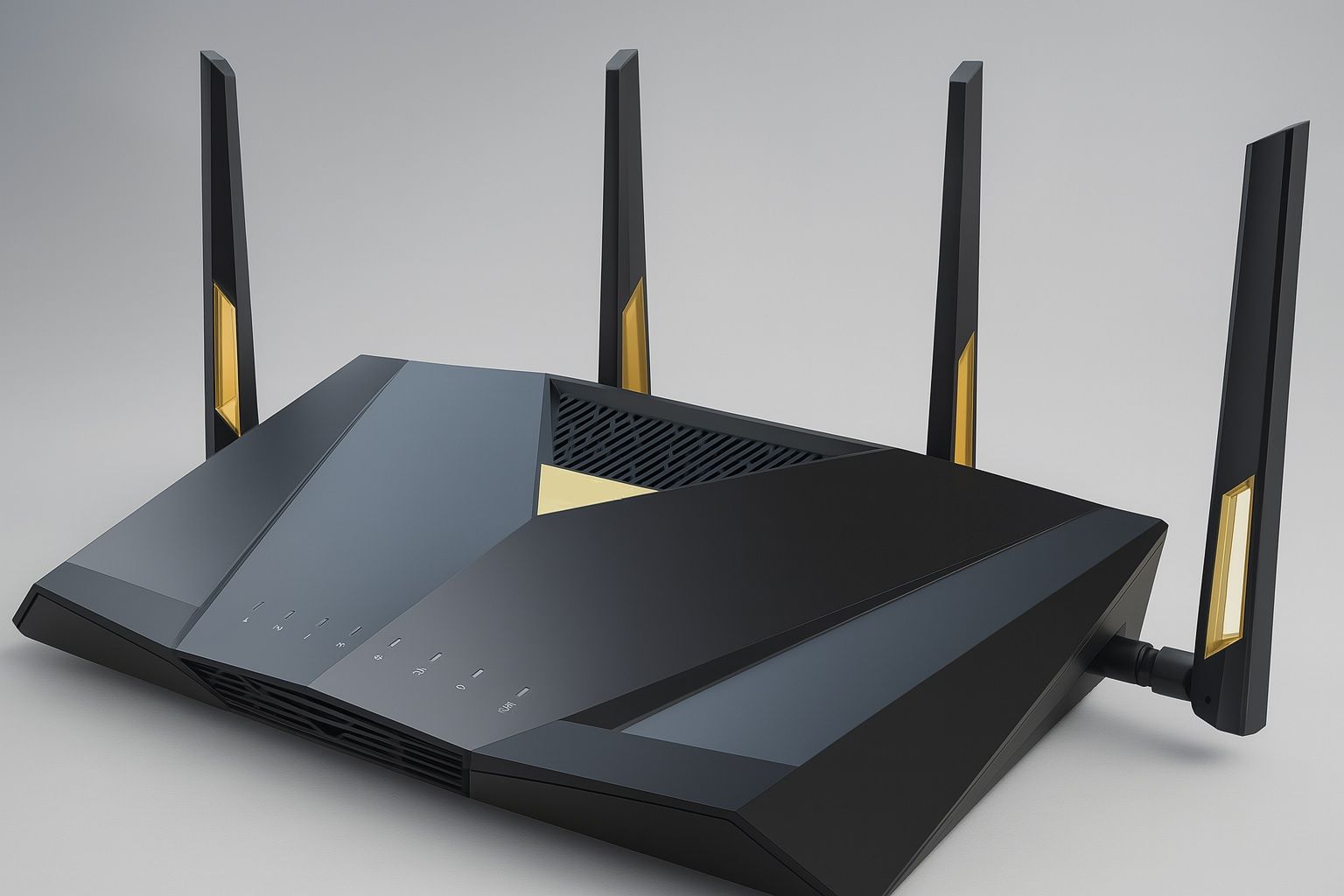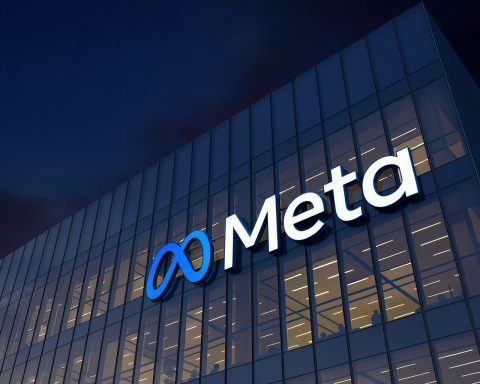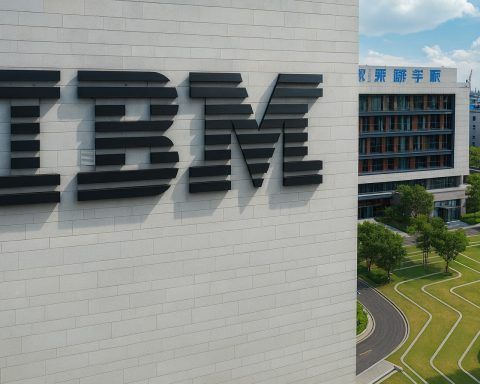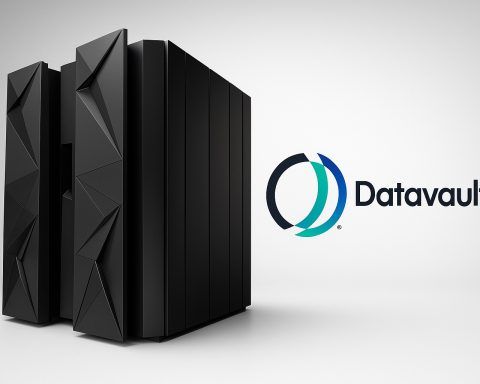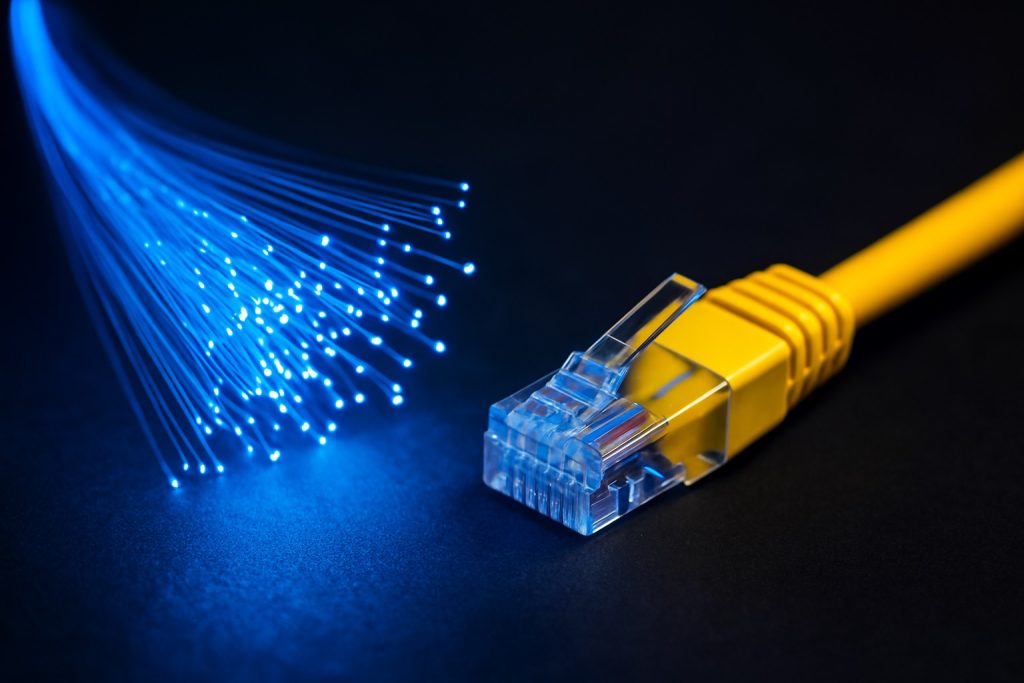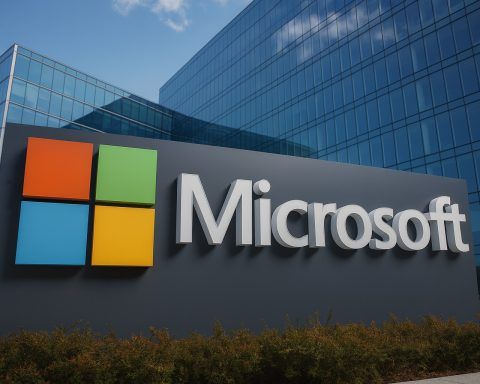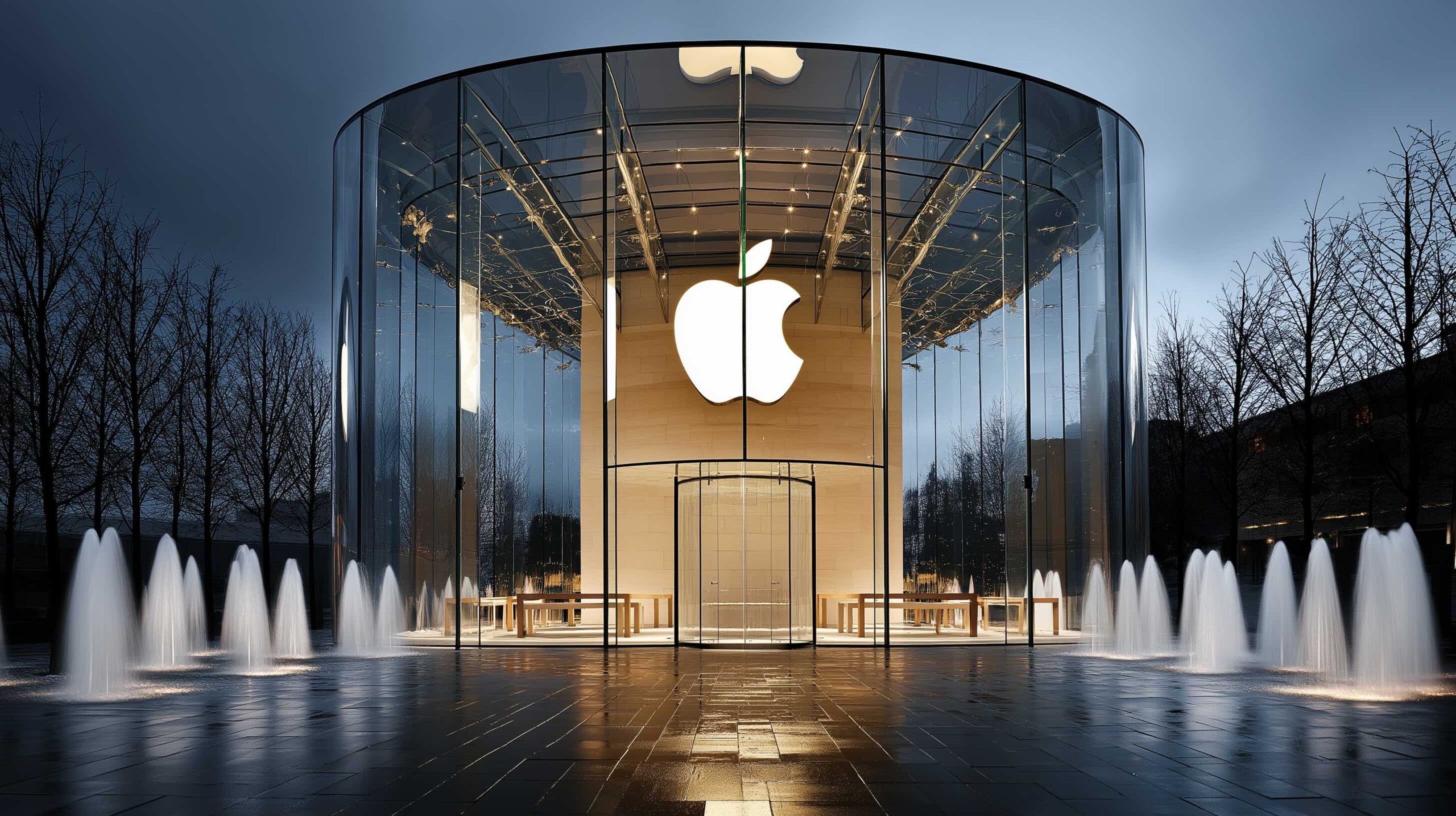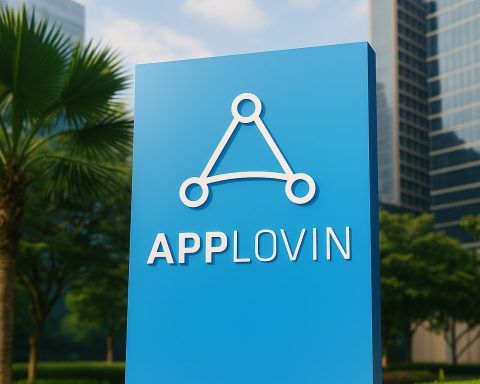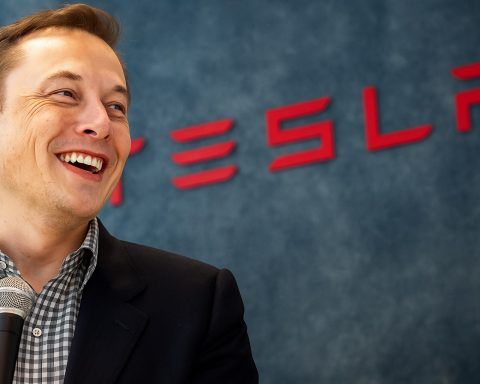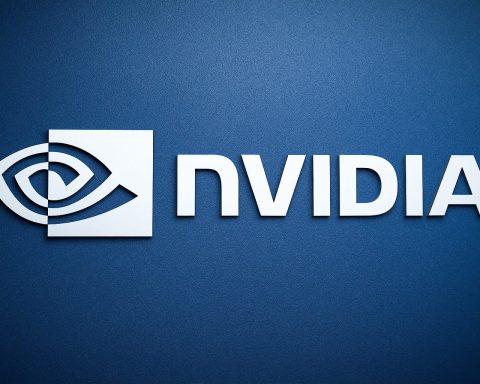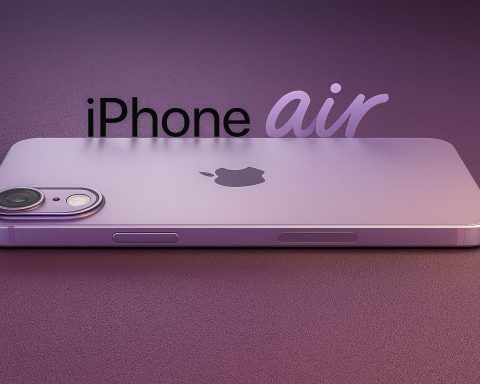- Global telecom equipment revenues fell about 11% in 2024 and are expected to be essentially flat in 2025 as market conditions stabilize per Dell’Oro Group.
- MTN Consulting projects global telecom capex declining from $314 billion in 2023 to about $280 billion by 2028.
- Ericsson’s June 2025 Mobility Report projects 5G subscriptions reaching about 2.9 billion by end of 2025, roughly one-third of all mobile subscriptions, with potential to reach 6.3 billion by 2030.
- 5G networks are expected to carry 80% of global mobile data traffic by 2030, up from about 35% at the end of 2024.
- Over 80% of surveyed operators now offer Fixed Wireless Access (FWA), and more than half provide tiered-speed 5G home internet plans, up from 40% a year earlier.
- FWA is projected to account for 35% of new broadband connections through 2030, reaching about 350 million total FWA subscriptions.
- Huawei leads global telecom equipment share with about 31%, Nokia around 14%, Ericsson around 13%, while Samsung is a strong third option in markets that restrict Chinese vendors.
- Zain Kuwait became one of the first regional operators to launch commercial 5G-Advanced service across most of Kuwait, offering a 30-day free trial for postpaid customers.
- By mid-2025, China had 5G-Advanced available in 300+ cities and more than 10 million 5G-A users on premium plans, with China Mobile, China Telecom, and China Unicom collaborating with Huawei and ZTE on rollouts.
- In satellite integration, AT&T and AST SpaceMobile achieved the first 5G phone call via satellite in June 2025, SpaceX’s Starlink surpassed 1.5 million users by mid-2025, and OneWeb/Eutelsat plan to launch satellite internet service in India by late 2025.
Market Trends and Analyst Forecasts (Mid‑2025)
Global telecom infrastructure spending has plateaued in 2025 after the initial 5G rollout boom. Industry analysts report that worldwide telecom equipment revenues fell roughly 11% in 2024, and 2025 is expected to be essentially flat [1]. Excess inventory, macroeconomic challenges, and tough year-over-year comparisons (after early 5G builds) have tempered growth [2]. Dell’Oro Group expects market conditions to “stabilize in 2025” but with no robust recovery – making it another challenging year for vendors [3]. Similarly, MTN Consulting projects global telecom capital expenditures will decline from $314 billion in 2023 to ~$280 billion by 2028, indicating tighter budgets ahead [4].
At the same time, 5G adoption continues climbing. Ericsson’s June 2025 Mobility Report forecasts 5G subscriptions will reach ~2.9 billion by end of 2025 (about one-third of all mobile subs) [5]. Looking further out, 5G subscriptions could double to 6.3 billion by 2030, with 5G networks expected to carry 80% of global mobile data traffic by 2030 (up from ~35% at end of 2024) [6]. Mobile data usage is still rising (~19% YoY in Q1 2025), though the growth rate is slowing as the market matures [7]. Fixed Wireless Access (FWA) is one notable bright spot: over 80% of surveyed operators now offer FWA, and more than half provide tiered-speed home internet plans using 5G (up from 40% a year ago) [8]. FWA is projected to account for 35% of new broadband connections through 2030 (reaching ~350 million total FWA subscriptions) as operators use 5G to deliver home internet where fiber is impractical [9].
Vendor market share remains heavily influenced by geopolitics. Huawei still leads with about 31% of global telecom equipment share (more than Nokia and Ericsson combined) [10]. Even excluding China’s huge domestic market, Huawei remains the top supplier globally, per Dell’Oro [11]. Nokia (~14% share) and Ericsson (~13%) lead in most Western markets, while Huawei (and smaller peer ZTE) dominate in China and parts of Africa [12] [13]. Samsung ranks as a strong third option in markets that restrict Chinese vendors [14]. This vendor landscape reflects a “bifurcated” telecom world – with Ericsson/Nokia prevalent in Europe & North America, Huawei/ZTE in Asia and emerging markets, and others like Samsung filling remaining gaps [15].
Looking ahead, major analyst firms offer mixed forecasts. For 5G infrastructure, Frost & Sullivan projects a modest ~2% CAGR growth over the next five years (driven mainly by continued 5G radio deployments) [16]. In contrast, some expect overall operator spending to tighten. Nonetheless, demand for connectivity is still climbing – Ericsson’s data shows mobile traffic and 5G uptake on a strong trajectory [17]. The key question is monetization. “We are at an inflection point, where 5G and the ecosystem are set to unleash a wave of innovation,” says Ericsson CTO Erik Ekudden, “but [this] depends on deploying standalone 5G cores and broad mid-band coverage to enable new services.” Ekudden notes operators are starting to move beyond basic data plans and “monetize [5G] through innovative service offerings,” but unlocking 5G’s full potential requires continued investment in 5G Standalone networks and advanced capabilities [18]. Huawei’s rotating chairman Eric Xu echoed that after “nearly four decades of rapid growth, the [telecom] industry has entered a period of steady development,” so new growth must come from fresh value-added services and use cases [19]. In other words, the revenue model needs to catch up with the technology.
To that end, carriers are exploring enterprise and advanced 5G opportunities. Private 5G networks for industries, IoT/automation solutions, and edge cloud services are gaining momentum. Mid-2025 assessments by Omdia identified Nokia, ZTE, and Ericsson as leaders in private wireless deployments, reflecting strong telco interest in the enterprise segment. 5G-Advanced (5.5G), with its enhanced capabilities, is seen as a catalyst for new consumer experiences (like XR/VR and cloud gaming) and enterprise services (e.g. ultra-reliable low-latency links for Industry 4.0). Overall, the mid-2025 outlook shows a telecom sector in transition – core spending is flattening, but 5G traffic, subscribers, and use cases are soaring, forcing operators and vendors to seek new revenue streams (advanced 5G services, enterprise solutions, FWA, etc.) to justify ongoing network investments [20].
5G Rollouts and 5G-Advanced Upgrades Worldwide
Global 5G network rollouts continued through June–July 2025, with many carriers now shifting focus from initial coverage to upgrading networks with 5G-Advanced (aka “5.5G”) and deploying Standalone 5G cores. For example, in the Middle East, Kuwait’s Zain became one of the first regional operators to launch commercial 5G-Advanced service across most of Kuwait [21]. Zain’s new 5.5G offering touts higher speeds for UHD video streaming, faster downloads, and lag-free online gaming. To entice users to try the upgrade, Zain is giving postpaid customers a free 30-day trial of 5G-Advanced before asking them to pay a premium for it [22]. (Notably, Zain had been a 5G pioneer in the Gulf, first launching 5G in 2019, and is now aiming to stay ahead with 5.5G.)
China is leading the world in 5.5G adoption. By mid-2025, 5G-Advanced was available in 300+ Chinese cities, and the country had over 10 million 5G-A users already on premium 5G plans [23]. All three major Chinese mobile carriers (China Mobile, China Telecom, China Unicom) are working with Huawei and ZTE on these 5G-A rollouts. During Mobile World Congress Shanghai 2025 (late June), Huawei highlighted China’s head start and noted that commercial 5.5G deployments will soon accelerate in other regions like the Middle East and Asia-Pacific later in 2025 [24]. Operators in those markets are trialing experience-based monetization models – for instance, introducing premium 5G tiers with guaranteed QoS or higher uplink speeds for certain applications [25]. In China and beyond, carriers see 5G-A as a way to offer ultra-fast, low-latency connections that can fuel new services in smart living, connected vehicles, advanced manufacturing, and more [26].
At MWC Shanghai, vendors showcased technologies to support these advanced 5G scenarios. Huawei’s theme was “Accelerating the Intelligent World,” emphasizing integration of AI “agents” with 5G networks to unlock new services [27]. In a keynote, Huawei’s Eric Xu outlined growth opportunities like meeting new user demands (e.g. XR/VR), bringing 5G connectivity to vehicles, and leveraging fiber-to-the-room (FTTR) for small businesses – all to reignite growth in the 5G era [28]. A major theme was that carriers can use AI and 5.5G capabilities to transform themselves from pure connectivity providers into platforms for digital agents, smart homes, and intelligent vehicle services [29]. To that end, Chinese carriers and Huawei shared successes in experience monetization projects, where AI-driven network features enable premium offerings (for example, guaranteed video streaming quality or low-latency gaming packages) that customers might pay extra for [30]. Huawei noted the telecom industry’s growth has slowed, but argued that AI + 5G-A can open “new pathways to growth” if carriers capitalize on their strengths in networks, cloud, and data [31] [32].
Other vendors are also delivering 5G-A innovations. ZTE, for instance, introduced a solution called “5G-A AgentGuard” at MWC Shanghai – a network intelligence platform designed for the AI era [33]. AgentGuard uses native AI in the network to provide deterministic on-demand performance for AI-driven services [34]. It effectively transforms static QoS rules into an intelligent, dynamic system that recognizes when traffic comes from an AI application (versus a human user) and then allocates network resources in real time based on the AI’s needs [35]. In demos, ZTE showed this can boost uplink speeds and cut latency by >20% for voice assistant interactions and other AI-heavy services – ensuring “smooth and accurate execution of digital agents” on 5G-Advanced networks [36]. Such capabilities will be crucial as carriers attempt to make 5G networks into platforms for AI applications (think autonomous drones, AR glasses, industrial robots, etc.).
Meanwhile, Open RAN developments remain a bit muted in mid-2025. Many operators have grown cautious due to integration challenges in multi-vendor open networks. In June, the UK’s Digital Catapult lab received official OTIC certification from the O-RAN Alliance, signaling progress in testing open RAN solutions [37]. But a Light Reading analysis suggested Ericsson and Nokia may have “vanquished the open RAN threat,” as large-scale deployments by new vendors have yet to materialize [38]. Incumbent suppliers are upping their game – for example, Nokia’s latest AirScale massive MIMO radios and basebands (rolled out with Elisa Finland in June) boast high performance and energy efficiency [39]. Such advances make it harder for open RAN alternatives to compete on cost or capability. Indeed, Nokia and Elisa announced a 4-year deal to upgrade Elisa’s 5G core and data centers with cloud-native core software and new energy-efficient base stations, cutting core network power use by up to 20% [40] [41]. Europe’s operators, having nearly finished 5G coverage buildouts, are now focusing on Standalone 5G cores and network automation to enable advanced services. (In the UK, BT’s EE had its 5G SA core covering ~40% of the population by spring 2025, unlocking features like network slicing and low-latency links [42]. EE even branded its SA rollout as “more than a network upgrade,” highlighting new applications like mobile private networks and quality-on-demand streaming that SA 5G makes possible [43].)
Regionally, North America and Europe have mostly completed their initial 5G mid-band rollouts, while India has been a standout – achieving ~95% 5G coverage in just over a year of deployment (a remarkably rapid build) [44]. In Europe, mid-band 5G covered over 50% of the population by end of 2024 (roughly on pace with the global average, though still behind North America’s ~90% and India’s 95%) [45]. Now the emphasis is on plugging remaining coverage gaps and adding capacity/standalone capabilities. India’s 5G push (led by Jio and Bharti Airtel) continued at breakneck speed into mid-2025, with tens of thousands of new sites lighting up. Indian operators are also beginning to test 5G Advanced features and invest in network automation, given the huge scale of their networks.
Real-World Trials: Satellites and Network Integration
Beyond terrestrial towers, June–July 2025 saw significant progress in integrating satellite connectivity into next-gen networks – a trend toward a “network of networks” combining fiber, 5G, Wi-Fi, and satellites for truly ubiquitous coverage [46]. In June, AT&T and satellite partner AST SpaceMobile achieved their first-ever 5G phone call via satellite [47]. This test call (building on earlier 4G LTE satellite tests in 2023) used AST’s prototype BlueWalker satellite to relay a standard 5G voice call, hinting that AT&T may eventually follow T-Mobile’s lead in offering satellite-to-phone service for regular handsets [48]. In Japan, NTT DoCoMo is pursuing a similar direct-to-device satellite plan, working with startups to cover remote islands with connectivity from space [49].
Satellite broadband for home and enterprise is also expanding. SpaceX’s Starlink service surpassed 1.5 million users globally by mid-2025, and competitor OneWeb (now merged with Europe’s Eutelsat) announced plans to launch satellite internet service in India by late 2025 (pending regulatory approval) [50] [51]. In some developing regions, LEO satellites are seen as a quick way to connect rural areas – though debates continue about long-term reliability and cost versus fiber. (In the U.S., for instance, officials in West Virginia argued in June that they prefer fiber builds over Starlink for rural broadband, despite Starlink’s fast deployment, citing concerns about consistency and capacity [52].)
Overall, mid-2025 signals that satellites are becoming an important complement to 5G networks rather than a niche afterthought. Industry experts describe the emerging “network of networks” approach – combining terrestrial 5G/4G, Wi-Fi, and satellite links – as the blueprint for ubiquitous connectivity worldwide [53]. While revenue directly from satellite services is still nascent for telcos, the strategic value of filling coverage gaps and offering always-on service (for critical IoT, maritime, aviation, disaster recovery, etc.) is huge [54]. In fact, a June analysis projected that telco and tech investment in satellite communications could hit $20 billion in 2025, and the satellite telecom service market (broadband, IoT, etc.) might reach $160+ billion in coming years [55]. Standards and partnerships forged in 2025 – including how satellites will interface with 5G/6G devices – will determine how big a role non-terrestrial networks play in 6G and beyond [56].
Wi‑Fi 7 Launches and New Networking Hardware
The next generation of Wi-Fi – Wi‑Fi 7 (IEEE 802.11be) – began seeing major product rollouts in mid-2025. Wi‑Fi 7 promises multi-gigabit speeds, extremely low latency, and better handling of crowded environments (leveraging the 6 GHz band and advanced features like Multi-Link Operation and 320 MHz channels). Networking vendors globally announced new Wi‑Fi 7 hardware for both enterprise and consumer markets during June–July:
- CommScope/Ruckus debuted AI-driven Wi‑Fi 7 solutions for the hospitality industry. On June 16, Ruckus Networks (a CommScope division) unveiled a portfolio of Wi‑Fi 7 access points and related cloud/AI software aimed at hotels and resorts [57]. This includes the Ruckus H670 – a tri-radio, wall-mounted Wi‑Fi 7 AP for premium hotel rooms (with dual IoT radios and multi-gig PoE ports to power smart in-room devices) – and the Ruckus R370 dual-band Wi‑Fi 7 AP for mid-scale hotels, which doubles the throughput of previous Wi‑Fi 6 models in a cost-effective package [58] [59]. These APs integrate with Ruckus’s AI-driven cloud management (the RUCKUS One platform) to optimize connectivity and enable personalized guest Wi‑Fi experiences. The goal is to let hotels of every tier (from luxury to budget) deploy Wi‑Fi 7 to support modern guest demands like 4K streaming, video calls, and IoT amenities, all with reliable performance guaranteed by AI-powered network assurance [60] [61].
- Cisco expanded its Wi‑Fi 7 portfolio at the Cisco Live 2025 conference (June). Notably, Cisco introduced the Catalyst 9179F series access points – high-performance Wi‑Fi 7 APs for stadiums and large venues [62]. The 9179F is a tri-radio AP that supports seamless roaming across huge campuses via a new Cisco catalyst wireless gateway. Uniquely, it can integrate Ultra-Reliable Wireless Backhaul (URWB) technology alongside Wi‑Fi in one device, enabling it to wirelessly backhaul traffic with extreme reliability – useful for connecting dense crowds or outdoor event areas without running fiber [63]. Cisco noted this AP completes its Wi‑Fi 7 lineup, and emphasized that customers can manage Wi‑Fi 7 APs in either cloud-based (Meraki) or on-prem (Catalyst) mode interchangeably, thanks to a unified software approach [64]. Cisco Live also saw the launch of new campus switches (C9350, C9610) and secure SD-WAN routers designed for AI-era networks [65] [66], reflecting how Wi‑Fi 7 and 5G will be accompanied by more intelligent wired infrastructure.
- Arista Networks (known for cloud networking) announced several AI-driven campus network products on July 1, including new Wi‑Fi 7 access points and an SD-WAN acquisition. Arista unveiled an entry-level indoor AP (the C-400), a cost-effective 2×2 tri-radio Wi‑Fi 7 unit for small offices and multi-dwelling units, and a ruggedized outdoor AP (the O-435), a weatherproof 2×2 Wi‑Fi 7 AP for industrial/outdoor use [67]. These APs are accompanied by a new compact PoE switch for branch sites, all aimed at making it easier to deploy high-performance wireless at the enterprise edge [68] [69]. Alongside this, Arista acquired the VeloCloud SD-WAN portfolio from Broadcom, integrating leading SD-WAN capabilities (with options for built-in 5G/LTE connectivity) into its offering [70] [71]. The moves earned Arista recognition in Gartner’s 2025 Magic Quadrant for Wired/WLAN – Arista was placed as the highest “Ability to Execute” among Visionaries, reflecting its momentum in enterprise networking [72].
- Consumer Wi‑Fi 7 devices have also proliferated. TP-Link, Asus, Netgear and others all announced Wi‑Fi 7 home routers or mesh systems in 2025. For instance, TP-Link in May–June made available a large lineup of Wi‑Fi 7 routers (Archer BE series) and Deco mesh kits, ranging from flagship tri-band models down to mid-tier dual-band units [73] [74]. These support features like 320 MHz channels and 4K-QAM modulation for extreme throughput, though entry models trade some top-end features (e.g. dual 10 GbE ports or 4×4 MIMO) for cheaper price points [75] [76]. By mid-2025, more than 1,200 Wi‑Fi 7 device models (routers, phones, laptops, IoT gadgets, etc.) had either been announced or were in development globally, as vendors anticipated the finalization of the 802.11be standard. Wi‑Fi 7 certification by the Wi‑Fi Alliance is underway (the first wave of certification began in early 2024), so a broader ecosystem of interoperable Wi‑Fi 7 products is expected by late 2025.
Overall, the June–July 2025 period saw Wi‑Fi 7 truly arrive in the enterprise and prosumer markets. The convergence of Wi‑Fi 7 and 5G is also notable – for example, some of Arista’s branch solutions combine Wi‑Fi 7 + 5G, and Cisco’s AP includes a wireless backhaul link – highlighting that next-gen wireless isn’t an either/or choice but a complement. Analysts expect Wi‑Fi 7 to play a key role for indoor connectivity (offloading 5G indoors and serving high-density venues), while 5G/6G excels in wide-area mobility. A recent analysis suggests Wi‑Fi 7 and 5G will be complementary, not cannibalistic: enterprises will use both, depending on use case [77]. Regulatory developments also influence Wi‑Fi 7’s growth – e.g. the availability of 6 GHz unlicensed spectrum. (Europe and most of Asia have opened 6 GHz for Wi‑Fi so far; China is an outlier, preferring licensed use. In the US, the full 1200 MHz of 6 GHz is unlicensed, though as discussed below, there’s political pressure to reclaim part of it for cellular.)
Key Product Announcements (June–July 2025): To summarize some notable tech launches in this period, the table below highlights a few major next-gen networking product announcements and rollouts:
| Date | Company | Announcement | Description / Significance |
|---|---|---|---|
| June 16, 2025 | CommScope Ruckus | Wi‑Fi 7 Hospitality Portfolio (H670 wall AP, R370 AP, etc.) [78] [79] | AI-driven Wi‑Fi 7 solutions for hotels – first Wi‑Fi 7 APs tailored to hospitality, enabling better guest Wi‑Fi and IoT in luxury and budget hotels alike. |
| June 16, 2025 | Qorvo | 5G mMIMO RF Components (QPQ3550 filter, QPA9862 amplifier) [80] [81] | New compact BAW filter and high-efficiency pre-driver amp for 5G base stations – help shrink radio units, reduce heat, and support higher bandwidth in 5G-Advanced deployments. |
| June 18, 2025 | Nokia | Autonomous Network Fabric (AI Ops Platform) [82] [83] | Telecom-specific AI/automation suite for carriers – uses ML models and Google Cloud integration to automate network management across RAN, core, transport. Aims to cut complexity and improve reliability as 5G networks scale. |
| Late June 2025 | Cisco | Catalyst 9179F Wi‑Fi 7 AP [84] and Secure Campus Routers | Cisco Live unveilings: a stadium-grade tri-band Wi‑Fi 7 access point with integrated wireless backhaul, plus new Catalyst switches and secure branch routers designed for low-latency, high-capacity networking in the AI era. |
| July 1, 2025 | Arista Networks | Wi‑Fi 7 Access Points (C-400, O-435) [85] and VeloCloud SD-WAN acquisition [86] | Entry-level indoor and rugged outdoor Wi‑Fi 7 APs for enterprises, plus the purchase of Broadcom’s SD-WAN unit. Enhances Arista’s campus/branch portfolio with multi-access (Wi‑Fi 7 + 5G) and cloud-managed networking for the AI/IoT age. |
6G Research & Policy Developments
Although 6G (sixth-generation wireless) is still several years from deployment (target ~2030), the latter part of 2025 marks an important pivot from pure research to early standardization and prototyping for 6G. In June 2025, the global telecom industry took concrete steps toward defining 6G:
- 3GPP Launches 6G Study Phase: During the June 2025 3GPP meetings in Prague, industry members formally initiated the technical study items for 6G standardization [87]. Up to now, work had focused on gathering 6G requirements and candidate use cases; now the focus shifts to shaping the core technologies that will make up 6G [88]. The 3GPP timeline calls for these Release 20 study items to run from August 2025 for ~18–21 months, after which in 2027–28 the first concrete 6G work items (Release 21 specs) will be defined [89]. Ericsson researchers involved in 3GPP note that the goal is to have the initial 6G specifications completed by end of 2028, which would enable the first wave of commercial 6G deployments around 2030 [90]. In this study phase, virtually all aspects of the system are on the table: new radio waveforms and spectrum (likely in sub-THz bands), AI-native network architectures, integrated sensing and communication, advanced security, and more [91] [92]. Notably, unlike early 5G (which started as non-standalone atop 4G), the intent is for 6G to be a fully standalone architecture from day 1 – meaning 6G radios and cores should operate independently of 5G, to unlock all new capabilities without legacy constraints [93]. This implies mobile operators will gradually migrate to 5G Standalone over the next few years, not only to realize 5G’s potential but to prepare the path for smoother 6G introduction [94].
- Breakthrough 6G Lab Trials: Researchers hit new performance milestones in the sub-terahertz frequencies envisioned for 6G. In mid-June, Keysight Technologies and Japan’s NTT announced a world-record 6G data rate of 280 Gbps in the 300 GHz band [95]. Using an advanced J-band (around 300 GHz) power amplifier from NTT’s device labs along with Keysight’s signal test equipment, the team surpassed the previous 240 Gbps record, transmitting a high-quality modulated signal at 280 Gbps over a short distance [96] [97]. They employed digital predistortion techniques to overcome the distortion from amplifying such high-frequency signals [98]. This result, achieved on June 16 in Santa Rosa, CA, underscores the potential of sub-THz spectrum for ultra-fast wireless – a likely feature of 6G for short-range, fiber-like links. Similarly, on June 23 at the IEEE ICC conference, LG Electronics and Emerson demonstrated a 6G sub-THz prototype platform operating at 160 GHz [99]. Their proof-of-concept system can transmit and receive signals up to 4 GHz wide in real-time, enabling tests of new 6G waveforms and duplex methods in the 160 GHz band [100]. LG’s 6G research head noted they’ve already seen successes in technologies like full duplex, integrated sensing/communication, and sub-THz transmission, and as 6G moves to standardization, such prototyping will prove viability in the field [101]. These kinds of trials – including a recent Korean demo of 200 Gbps 6G at 140 GHz by ETRI (late 2024) [102] [103] – show that academia and industry are aggressively working to shatter throughput and latency limits, exploring exotic spectrum (100–300 GHz), AI-driven air interfaces, and even quantum and visible light communication for 6G.
- Analyst & Industry Visions: Across various 6G forums in mid-2025, experts painted a picture of what 6G might enable. Common themes include immersive XR and the metaverse, truly ubiquitous IoT connectivity (connecting trillions of sensors, vehicles, drones, etc.), and integration of communication with sensing and imaging (so networks not only carry data but also sense the environment, enabling applications like precision positioning and climate monitoring). AI/ML is expected to be deeply embedded in 6G – from AI-designed waveforms to autonomous network management – hence terms like “AI-native air interface” are emerging. For example, NTT and Nokia have been working on an AI-native 6G air interface that uses machine learning to optimize radio signals on the fly [104].
From a standards and funding perspective, major powers are jockeying for 6G leadership. Europe (via the EU’s SNS Joint Undertaking) launched new funding calls in 2025 for 6G trials targeting key verticals (with €128 million earmarked in 2025 for pilots in areas like manufacturing, media, healthcare, and public safety) – aiming to validate 5G-Advanced and pre-6G technologies in real-life scenarios [105] [106]. The goal is to both spur 6G innovation and ensure Europe has input into global 6G standards. Japan, South Korea, and China likewise have government-industry programs for 6G R&D (e.g. Japan’s Beyond 5G initiative, Korea’s 6G Forum). The U.S. established its “Next G Alliance” (under ATIS) and is funding university research, though some in industry urge greater coordination to match the EU and Asia’s efforts. A noteworthy policy aspect is spectrum: WRC-23 (late 2023) set the stage by identifying candidate frequencies (e.g. 7–15 GHz, 92–300 GHz) that might be harmonized for 6G. In June 2025, regulators and industry in many countries are already evaluating how to allocate terahertz spectrum for experimental licenses. The outputs from 3GPP’s Release 20 studies (in 2025–27) will heavily influence what spectrum bands and technologies get prioritized.
Regulatory and Policy Updates
Several policy developments in June–July 2025 could significantly impact next-gen networks:
- United States 6 GHz Spectrum Battle: A late June political showdown in Washington put the spotlight on the valuable 6 GHz band, which is currently open for unlicensed use (Wi‑Fi 6E/7) in the U.S. In a Senate draft of a large budget reconciliation bill (sometimes dubbed the “big beautiful bill”), lawmakers inserted a provision that would force the FCC to auction off up to half of the 6 GHz band to licensed 5G carriers [107]. The House’s version of the bill had explicitly protected the 5.925–7.125 GHz range (all 1200 MHz of 6 GHz) for unlicensed use, but the Senate removed that exclusion [108]. If the Senate’s language prevails, the FCC could be mandated to sell 800 MHz worth of the 6 GHz frequencies to cellular providers like AT&T and Verizon, rather than leaving it all for Wi‑Fi [109]. Proponents like Senator Ted Cruz argue this would “help prepare carriers for the next wireless leap” (i.e. more mid-band spectrum for 5G/6G) [110], and it would raise billions in auction revenue to offset government spending [111]. However, tech companies and Wi‑Fi advocates are alarmed – the 6 GHz decision in 2020 was heralded as a transformative boon for Wi‑Fi capacity. Industry groups warn that carving away unlicensed spectrum now could “make your Wi‑Fi suck” (as one public interest group put it bluntly) by throttling the potential of Wi‑Fi 7 and beyond [112]. The 6 GHz band is used for the new wider channels that deliver multi-gigabit Wi‑Fi; losing even half of it could reintroduce congestion and reduce performance for next-gen routers [113]. It’s a classic tug-of-war between licensed mobile and Wi‑Fi: mobile carriers would love more mid-band spectrum for 5G (even though AT&T stated as recently as June that it has “no pressing need” for more spectrum right now [114]), whereas the Wi‑Fi camp points out that 6 GHz unlicensed has driven huge innovation in wireless LANs and eased congestion on legacy 2.4/5 GHz Wi‑Fi [115]. As of early July 2025, this provision was still being debated – the outcome (to be decided in Congress) could profoundly shape the U.S. wireless landscape, either preserving 6 GHz for Wi‑Fi 7/8 or partially reallocating it for future 5G/6G networks.
- EU and Allied Nations Restricting Chinese 5G Gear: Security policies around 5G infrastructure remained in focus. By mid-2025, 11 EU countries (including major ones like Germany, France, and others) have taken steps to restrict or ban Huawei and ZTE equipment in their 5G networks [116]. In June 2025, EU Internal Market Commissioner Thierry Breton continued urging member states to phase out “high-risk vendors” from 5G, citing espionage and resilience concerns. Germany, which had been slow to act, confirmed plans to require removal of Huawei/ZTE from core networks by 2026 and possibly restrict them in radio networks by 2029 [117]. The U.K. and Canada already have bans in place (with the UK’s deadline to remove Huawei from 5G by end of 2027). This geopolitical backdrop doesn’t directly affect next-gen tech news, but it influences which vendors provide the gear for 5G Advanced and future 6G in the West. It also has spurred increased investment in Open RAN and domestic alternatives in Europe (though, as noted, open RAN uptake has been slower than hoped). The bottom line: network security and supplier trustworthiness are now key criteria alongside performance – a trend likely to carry into 6G discussions as well.
- Other Spectrum/Policy Moves: In other regions, regulators allocated new bands for 5G and Wi‑Fi. For instance, some Latin American countries conducted 5G mid-band spectrum auctions in mid-2025 (e.g. Chile auctioned 3.5 GHz, and Brazil prepared auctions for millimeter-wave bands). Japan was reportedly exploring opening the upper 6 GHz band (7.125–7.25 GHz) for unlicensed use, to extend Wi‑Fi 7 capabilities. China, conversely, signaled it may repurpose parts of 6 GHz for a licensed “5G New Radio-Light” system (for indoor 5G small cells). Also, the U.S. FCC in June approved expanded use of very low power devices across the entire 6 GHz band (e.g. for AR/VR and wearable Wi‑Fi devices), a win for gadget makers [118]. And in the satellite realm, regulators worldwide began crafting rules for Non-Terrestrial Networks (NTN) integration – for example, how mobile phones can use satellite fallback on approved bands like Band n255/n256 (for SpaceX/T-Mobile’s system). International bodies like the ITU and 3GPP are working on these standards so that by 2026, ordinary smartphones could seamlessly message via satellite when out of tower range.
In summary, June–July 2025 was a pivotal period in next-generation networking. 5G is transitioning from initial rollout to advanced upgrades (5G-Advanced) and deeper monetization efforts, with impressive deployment milestones in places like China, the Middle East, and India. Vendors are introducing more powerful yet efficient hardware – from AI-driven 5G network software to Wi‑Fi 7 access points – to meet the demand for faster, smarter connectivity. Early 6G research is yielding record-breaking demos in the lab even as formal standardization begins, planting the seeds for what the 2030s will bring. And around the world, policymakers are negotiating the rules and resources (spectrum, security, funding) that will underpin these technologies.
The overarching theme is convergence: cellular networks, Wi‑Fi, satellites, and cloud technologies are increasingly interwoven to deliver seamless connectivity. Industry leaders and analysts remain optimistic that this next generation of networks – if effectively monetized and well-supported by policy – will unlock new waves of economic growth and innovation, from autonomous AI systems to immersive communications. The developments of mid-2025 show the world is well on its way to that hyper-connected future, even as challenges of investment and coordination remain. The remainder of 2025 will be watched closely for 5G-Advanced commercial launches, the outcome of spectrum policy battles, and clues to how 6G might ultimately take shape as we head toward the latter half of the decade.
Sources: The information above is drawn from a range of June–July 2025 news releases, industry reports, and expert commentary, including Ericsson’s Mobility Report [119], Huawei’s MWC Shanghai announcements [120] [121], Light Reading and TelecomTV analyses [122] [123], regulatory filings [124], and press releases from companies like Nokia [125], Ruckus (CommScope) [126], Arista Networks [127], Keysight/NTT [128], and others. All cited material is referenced in-line with 【source†lines】 for verification and further reading.
References
1. ts2.tech, 2. ts2.tech, 3. ts2.tech, 4. ts2.tech, 5. ts2.tech, 6. ts2.tech, 7. ts2.tech, 8. ts2.tech, 9. ts2.tech, 10. ts2.tech, 11. ts2.tech, 12. ts2.tech, 13. ts2.tech, 14. ts2.tech, 15. ts2.tech, 16. ts2.tech, 17. ts2.tech, 18. ts2.tech, 19. ts2.tech, 20. ts2.tech, 21. www.lightreading.com, 22. www.lightreading.com, 23. www.prnewswire.com, 24. ts2.tech, 25. ts2.tech, 26. www.prnewswire.com, 27. ts2.tech, 28. ts2.tech, 29. ts2.tech, 30. www.prnewswire.com, 31. www.prnewswire.com, 32. www.prnewswire.com, 33. ts2.tech, 34. ts2.tech, 35. ts2.tech, 36. ts2.tech, 37. ts2.tech, 38. ts2.tech, 39. ts2.tech, 40. ts2.tech, 41. ts2.tech, 42. ts2.tech, 43. ts2.tech, 44. ts2.tech, 45. ts2.tech, 46. ts2.tech, 47. ts2.tech, 48. ts2.tech, 49. ts2.tech, 50. ts2.tech, 51. ts2.tech, 52. ts2.tech, 53. ts2.tech, 54. ts2.tech, 55. ts2.tech, 56. ts2.tech, 57. www.ruckusnetworks.com, 58. www.ruckusnetworks.com, 59. www.ruckusnetworks.com, 60. www.ruckusnetworks.com, 61. www.ruckusnetworks.com, 62. www.crn.com, 63. www.crn.com, 64. www.crn.com, 65. www.crn.com, 66. www.crn.com, 67. www.arista.com, 68. www.arista.com, 69. www.arista.com, 70. www.arista.com, 71. www.arista.com, 72. www.arista.com, 73. dongknows.com, 74. dongknows.com, 75. dongknows.com, 76. dongknows.com, 77. cenerva.com, 78. www.ruckusnetworks.com, 79. www.ruckusnetworks.com, 80. www.qorvo.com, 81. www.qorvo.com, 82. ts2.tech, 83. ts2.tech, 84. www.crn.com, 85. www.arista.com, 86. www.arista.com, 87. www.ericsson.com, 88. www.ericsson.com, 89. www.ericsson.com, 90. www.ericsson.com, 91. www.ericsson.com, 92. www.ericsson.com, 93. www.ericsson.com, 94. www.ericsson.com, 95. www.keysight.com, 96. www.keysight.com, 97. www.keysight.com, 98. www.keysight.com, 99. www.everythingrf.com, 100. www.everythingrf.com, 101. www.everythingrf.com, 102. www.rcrwireless.com, 103. www.rcrwireless.com, 104. the-mobile-network.com, 105. smart-networks.europa.eu, 106. smart-networks.europa.eu, 107. www.theverge.com, 108. www.theverge.com, 109. www.theverge.com, 110. www.theverge.com, 111. www.theverge.com, 112. publicknowledge.org, 113. www.theverge.com, 114. www.theverge.com, 115. www.theverge.com, 116. www.euronews.com, 117. www.euronews.com, 118. www.fcc.gov, 119. ts2.tech, 120. www.prnewswire.com, 121. www.prnewswire.com, 122. ts2.tech, 123. ts2.tech, 124. www.theverge.com, 125. ts2.tech, 126. www.ruckusnetworks.com, 127. www.arista.com, 128. www.keysight.com
